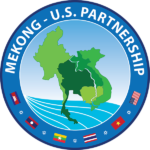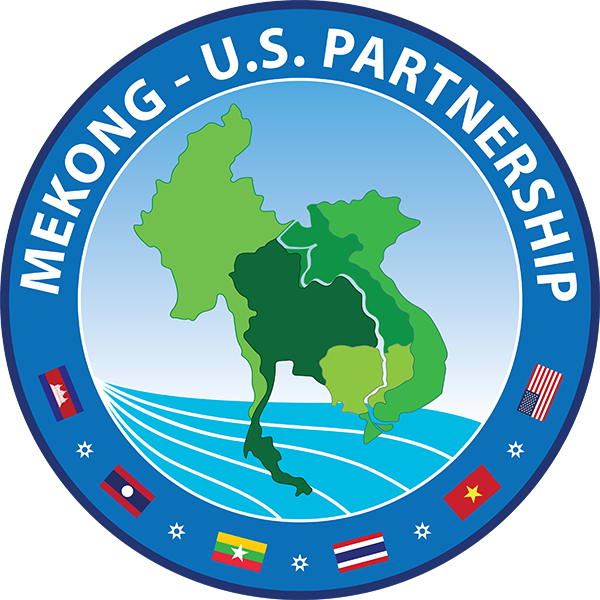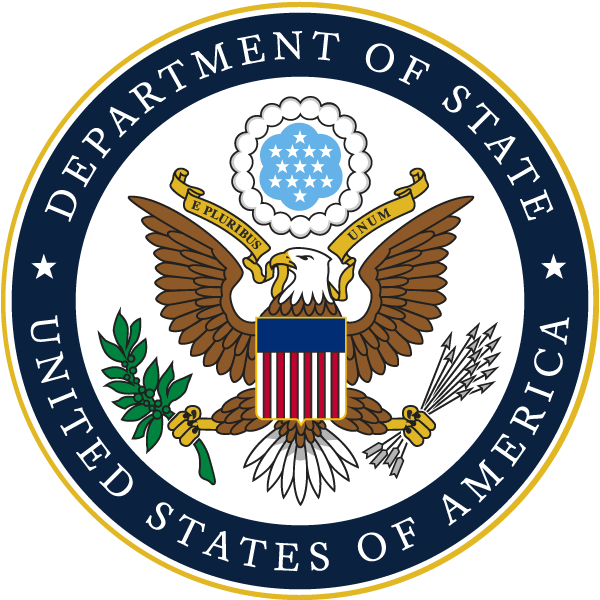President Obama attended the East Asia Summit (EAS) on November 20 in Phnom Penh, Cambodia, as part of the Administration’s continued focus on rebalancing its engagement in Asia to reflect the economic and strategic importance of this dynamic region. As an Asia-Pacific power the United States’ economic and security future is inextricably linked to the region, and President Obama used the summit to explore with other Asia-Pacific leaders ways to enhance cooperation on the region’s most pressing challenges, including energy, maritime security, non-proliferation, and humanitarian assistance and disaster response. The President made clear that full and active U.S. engagement in the region’s multilateral architecture helps to reinforce the system of rules, norms, and responsibilities, including respect for universal human rights and fundamental freedoms, that are essential to regional peace, stability, and prosperity.
The EAS is the region’s premier forum for Asia-Pacific leaders to discuss pressing political and strategic issues. The EAS was launched in 2005 in Kuala Lumpur, Malaysia, bringing together leaders of the 10 member states of the Association of Southeast Asian Nations (ASEAN) and six other Asia-Pacific region countries. With the participation of the United States and Russia for the first time in 2011, the EAS now includes all the major regional powers, including U.S. treaty allies Japan, the Republic of Korea, Australia, Thailand, and the Philippines, as well as India and China.
Energy Cooperation: Economic and population growth are fueling energy demand, making energy security an increasingly important issue in the Asia-Pacific region. To address this shared concern, President Obama announced the U.S.-Asia Pacific Comprehensive Partnership for a Sustainable Energy Future. This White House initiative will bring together in a comprehensive framework U.S. energy-related cooperation in multilateral and bilateral channels, focusing on providing technical assistance and financing for renewables, energy interconnectivity and markets, natural gas, and sustainable development. By leveraging U.S. private-sector engagement, technical expertise, and financing, in partnership with Brunei, Indonesia, and other regional leaders, this initiative will tangibly enhance energy security in the Asia-Pacific, setting the path for sustainable development for the 21st century.
Maritime Security: EAS members are linked by the region’s maritime spaces, which have enabled the region’s dynamic economic growth and facilitated greater connectivity. Maritime security is a priority issue for EAS countries that recognize that challenges including territorial and maritime disputes, piracy, trafficking in illicit materials, and natural disasters can threaten regional peace, stability, and prosperity. President Obama reaffirmed U.S. national interests in the maintenance of peace and stability, respect for international law, unimpeded lawful commerce, and freedom of navigation. President Obama encouraged the parties to make progress on a binding Code of Conduct in the South China Sea to provide a framework to prevent conflict, manage incidents when they occur, and help resolve disputes.
The United States has consistently worked with its partners in the Asia-Pacific region to build capacity and promote cooperation on maritime security issues.
- At the EAS, President Obama announced the U.S. intention to accede to the Regional Cooperation Agreement on Combating Piracy and Armed Robbery Against Ships in Asia (RECAAP), the first government-to-government agreement to promote and enhance cooperation against piracy and armed robbery in Asia.
- President Obama affirmed that the Expanded ASEAN Seafarers Training (EAST) program, which he announced at the U.S.-ASEAN Leaders Meeting, will be open to participation by all EAS members.
- The United States welcomed the creation of the Expanded ASEAN Maritime Forum to provide a platform for coordination among EAS countries on a range of maritime issues including marine environment, resource management, piracy, and capacity building.
Non-Proliferation: Noting the acute proliferation challenges facing the Asia-Pacific region, President Obama has called on regional leaders to work together and take steps to ensure that the world’s most dangerous weapons do not fall into the most dangerous hands. The United States welcomes positive steps made by EAS member states and regional forums toward improving regional cooperation on nonproliferation. These include:
- Thailand’s endorsement of the Proliferation Security Initiative, a global effort that aims to stop trafficking of weapons of mass destruction, their delivery systems, and related materials to and from states and non-state actors of proliferation concern.
- Vietnam’s ratification of the International Atomic Energy Agency (IAEA) Additional Protocol, which contains measures that increase the IAEA’s ability to verify the non-diversion of declared nuclear material and to provide assurances as to the absence of undeclared nuclear material and activities in a State.
- Japan, Australia, New Zealand, the Republic of Korea and Indonesia contributing to the Peaceful Uses Initiative, a five-year campaign announced by Secretary Clinton in 2010 to increase support for the IAEA’s peaceful uses programs.
- The ASEAN Regional Forum (ARF) adoption of its first-ever work plan on Nonproliferation and Disarmament, calling for specific workshops and capacity-building projects on nonproliferation, the peaceful use of nuclear energy, and disarmament.
President Obama welcomed these developments while acknowledging that much work still remains to be done to counter the spread of weapons of mass destruction and their means of delivery in the region. He called on leaders to:
- Reaffirm their support for the denuclearization of the Korean Peninsula in order to maintain peace and stability in the region.
- Reaffirm countries’ commitment to the international nonproliferation regime, stressing the importance of full compliance with our obligations under all UN Security Council Resolutions addressing nonproliferation, particularly those addressing Iran and North Korea.
- Support the outcomes of the 2012 Nuclear Security Summit held in Seoul to secure nuclear materials and prevent nuclear terrorism.
- Promote transparency and cooperation on safe, secure and peaceful nuclear development in the region, including through implementation of IAEA safeguards and universalizing of the Additional Protocol.
- Promote international bio-security cooperation and advance the outcomes from the Final Document of the 2011 Review Conference of the Biological Weapons Convention.
Humanitarian Assistance and Disaster Relief: The Asia-Pacific experienced major disasters with devastating impacts in 2011, accounting for 80 percent of global economic losses to disasters. Humanitarian assistance and disaster relief is a core agenda item of the EAS. The United States has a strong record of working with EAS member countries in disaster preparedness and institutional strengthening, and of bringing a unique set of capabilities, skills, and expertise in humanitarian assistance and disaster relief.
- Since 1995, the United States has invested more than $95 million in disaster risk reduction efforts in the region. This year, the United States provided an additional $22.7 million for disaster risk reduction programs which save lives at the time of disasters.
- President Obama welcomed the support by EAS Leaders for the Rapid Disaster Response (RDR) agreement. The RDR can significantly increase the ability for states to provide and receive swift and effective support in the event of future natural disasters in the region, as well as provide a framework for closer links between regional disaster response authorities.
- The President welcomed efforts to expand participation in regional humanitarian assistance and disaster relief (HADR) exercises, including the BALIKATAN U.S.-Philippine exercise that welcomed international participants for the first time this year. The United States also committed to join partner nations next year for the third ARF Disaster Relief Exercise co-hosted by Thailand and South Korea and the inaugural ASEAN-led, ADMM-Plus HADR and Military-Medicine Exercise hosted by Brunei.
Health: While technological progress has dramatically increased the movement of people, products, and ideas throughout the Asia-Pacific, it has also facilitated the spread of infectious diseases, some with pandemic potential. The United States has a history of partnering with countries in Asia to support the health and well-being of the region. U.S. efforts are premised on building local capacity to improve the regional response to health issues and relying less on outside assistance.
- President Obama was joined by the other EAS leaders in supporting Australia’s Declaration on Drug-Resistant Malaria.
- The United States is partnering with Thailand, a regional leader in malaria control, to fight drug resistant malaria in the region. The two-year, $680,000 agreement will support the Thai Ministry of Public Health’s efforts to strengthen malaria control and surveillance, particularly among migrant
Populations along its borders with Burma and Cambodia where drug-resistant malaria is most prevalent.
- The United States partnered with Singapore under the U.S.-Singapore Third Country Training Program (TCTP) to co-sponsor a Combating Counterfeit Health Products training course in August.
- U.S. participation in activities like the Lower Mekong Initiative (LMI) helps drive regional cooperation to build more effective regional disease responses and facilitate health exchanges. USAID’s Pandemic Influenza and other Emerging Pandemic Threats programs support domestic efforts and cross-border collaboration in line with the goals of the LMI at approximately $12.5 million per year.
Source: The White House
Source URL: http://www.whitehouse.gov/the-press-office/2012/11/21/fact-sheet-east-asia-summit-outcomes
 Mekong - U.S. Partnership
Mekong - U.S. Partnership


